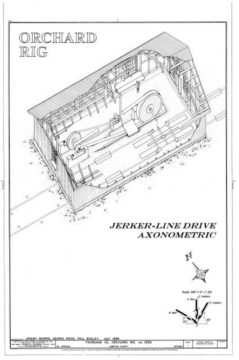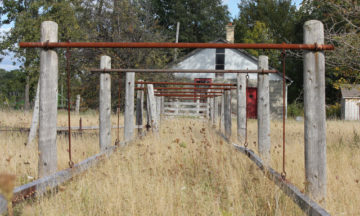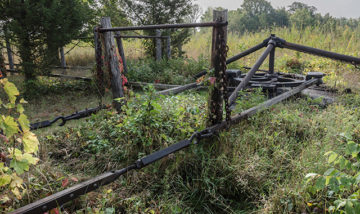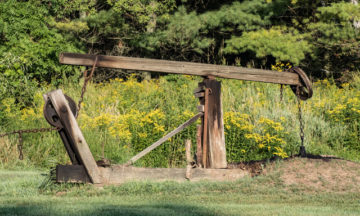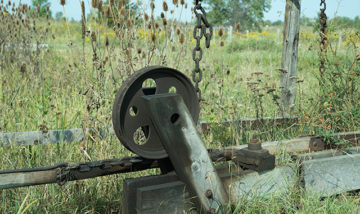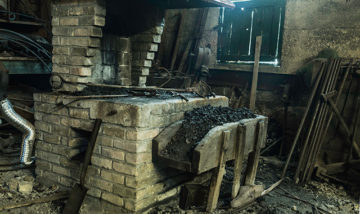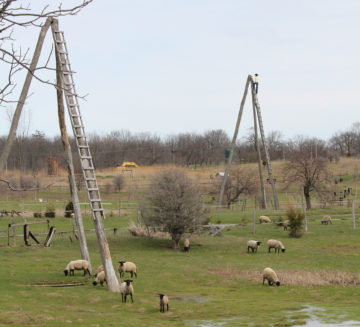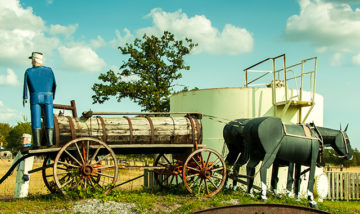
Photo: Willie Waterton
Once oil is pumped from the ground, it’s stored until there is a sufficient quantity to ship in bulk to Imperial Oil’s refinery in Sarnia. Early oilmen were painfully aware they were storing a flammable liquid and they feared fire. There were two horrific oil fires. In 1867, virtually everyone would have known that John D. Noble’s oil field in Petrolia went up in flames a mere 91 metres from Petrolia’s biggest wells.
After helplessly watching his oil field destroyed on the night of July 25, Noble wrote, “I looked up and saw that my last tank was gone, and the burning, fiery oil flowed over the land, the flowing well was aflame with all its tanks and the oil hissed and burned and the flames covered a space of ground about a quarter mile wide by a quarter mile long, and leaped 100 feet, and great columns of black smoke rolled up to the sky.”
Within a week another disastrous fire struck in Petrolia. “The great heat melted steel tanks. These steel or wooden tanks as they caught fire, burst and sent oil along a ditch into a tributary to Bear Creek; the crest of this rushing wave of burning oil gave the creek the appearance of a fiery dragon winding along the valley…At the time he estimated the loss of $100,000 and the fire was still burning.”
The two infernos would be a turning point for all oil operations. It led Noble to believe that the safest way to store oil was to deposit it underground. In fact, he poured it right into the clay and claimed he never lost a drop.
For the most part, oil has been stored underground ever since. The soil shields the oil from lightning strikes. It also eliminates temperature changes that can cause problems in winter when separating out the water. (Separating tanks do a good job of removing the water from the oil but some water remains.)
This method of storage was unique to Petrolia and Oil Springs said Dr. Emory Kemp, of West Virginia University. It was not used in United States. Of course, the heaviness of the clay in this area is quite unique too. “It’s really very ingenious and I think it’s entirely safe,” he said. Inside these underground tanks was a light cribbing of wood to keep the walls from caving in.
On Gum Bed Line, an above-ground tanks can be clearly seen. The tank, inherited from the purchase of the Baldwin property, has never been used here. To the delight of Charlie’s two young sons, he hired Renée Ethier to paint the tank to look like Thomas the Tank Engine in 1997.
When the storage tanks at Fairbank Oil are reaching 34 cubic meters (equal to 213 barrels), the foreman calls the Harold Marcus Ltd trucking company to the deliver the crude to the Imperial refinery in Sarnia.















